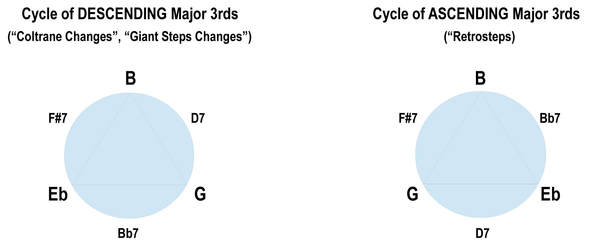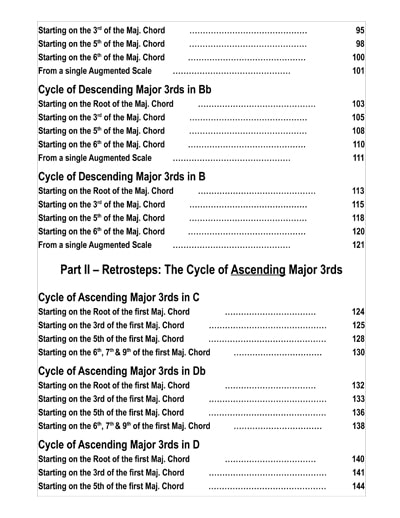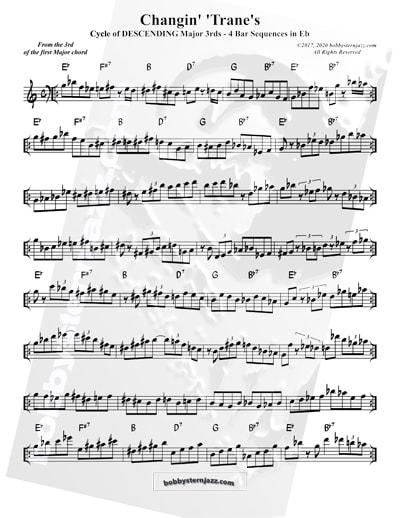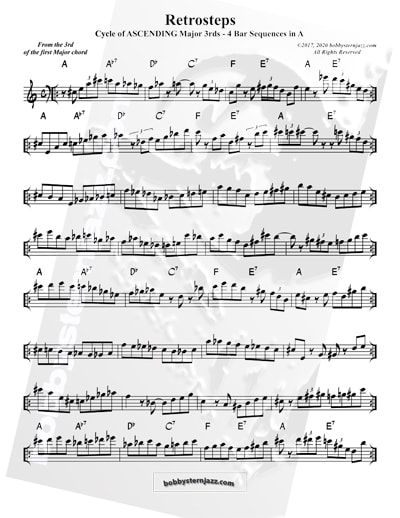
Coltrane's original intention for this cycle was as a harmonic substitution device that would take him “out of the ordinary path”, meaning the common ii-V7 cadences that most standards and jazz tunes were (and are) based on.
Retrosteps is a further variation of the Major 3rd cycle – the “Cycle of ASCENDING Major 3rds” - the directional description in caps being of primary importance.
||: B D7 | G Bb7 | Eb F#7 | B F#7 :||
Cycle of ASCENDING Major 3rds
||: B Bb7 | Eb D7 | G7 F#7 | B F#7 :||
Everything else remains identical!
This “switcheroo” into the Ascending Cycle opens up a whole new realm of possible melodic connection & resolution points between each V7 & I chord, as well as between each I chord and its following V7.
It should be noted that the B Section of the tune “Giant Steps” is based upon a progression of Ascending Maj. 3rds, with each Maj. chord as well as its ii-V7, lasting a full measure of 4/4, as opposed to 2 beats apiece per chords in “The Cycles”. The subject at hand here is not "Giant Steps" the tune; but rather the cycle that Coltrane used to compose it (and others), and its variant.
As with “Coltrane Changes”, a plethora of possible 4-note “digital” patterns are available, useful and even necessary; although the usual melodic connection points (normally a half or whole step between chords which best support a smooth melodic flow) will have shifted.
The Good News is: a slew of altered dominant, whole tone & diminished material will be available for good use.
Another interesting Retrosteps phenomenon is the possible reversal of the descending whole tone bass line, as found originally in Coltrane's “Satellite”: G Bb7/F | Eb F#7/C# | B D7/A | G alternating root and 5th in the bass.
Below is a harmonized example from the book, of a Retrosteps ascending whole tone bass line, alternating the 3rd and 5th of each chord in the cycle. It works very well with the example's descending melodic line, made up of familiar diminished scale fragments.
The material in each of these publications should aid in broadening one's understanding, appreciation and skill level in negotiating melodic lines through both variations of the Cycle of Major 3rds.
As was John Coltrane's original intention, it will guide you “out of the ordinary path”
"Changin' Trane's / Retrosteps" (click for more examples)









 RSS Feed
RSS Feed









